Hongdae has undergone significant transformation due to rapid commercialization, but many establishments of the early days remain, preserving the area’s identity and drawing a steady stream of locals and tourists alike.
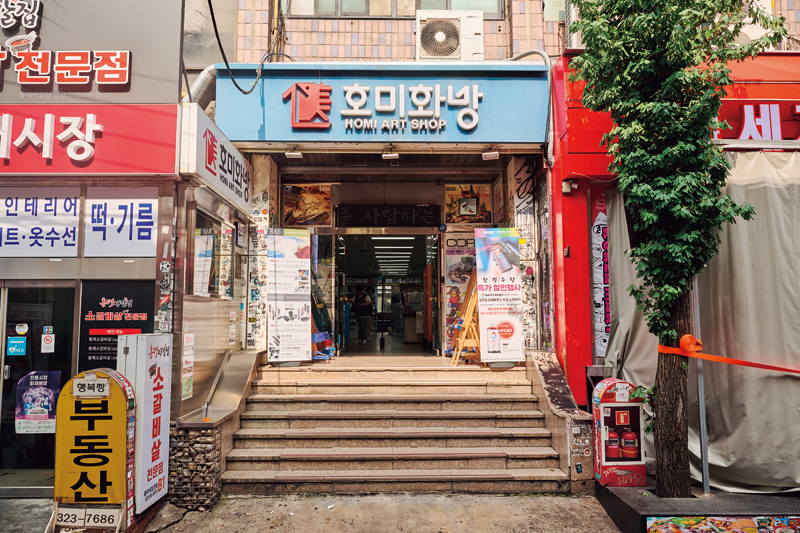
Homi Art Shop stands as a witness of half a century of transformations in the Hongdae area. The founder’s son took over the business in 1987, and the grandson now also lends a hand. The shop’s logo was designed in the late 1970s by a regular customer, then a graduate student at Hongik University. The name “Homi” means “art is eternal.”
During the heyday of Korea’s indie culture in the 1990s and 2000s, the name “Hongdae” was limited to Seogyo-dong, a neighborhood in Seoul’s Mapo District that borders the Han River and is home to several universities. In recent years, the boundaries of Hongdae have been extended to include not only its original core but also parts of the surrounding neighborhoods.
This transformation owes much to foodies, art enthusiasts, and music buffs who constantly streamed into the cafés, clubs, and cultural venues that sprouted throughout Seogyo-dong. They solidified Hongdae’s status as a hotspot for youth and alternative culture but unintentionally aroused economic interests.
Property owners raised rents, confident that the dynamic business environment would quickly bring in replacements if tenants balked. Soaring rents along with substantial investment in the area gradually displaced artists, who moved their creative spaces into more affordable places on the fringes of Hongdae. Consequently, Hongdae now encompasses a broader area with a particular cultural ethos, but the original Hongdae has not disappeared completely.
Despite the seismic shifts, in Hongdae pockets of individuality persist. These spaces remain steadfast, safeguarding the local culture amid large franchise stores and other symbols of big capital.
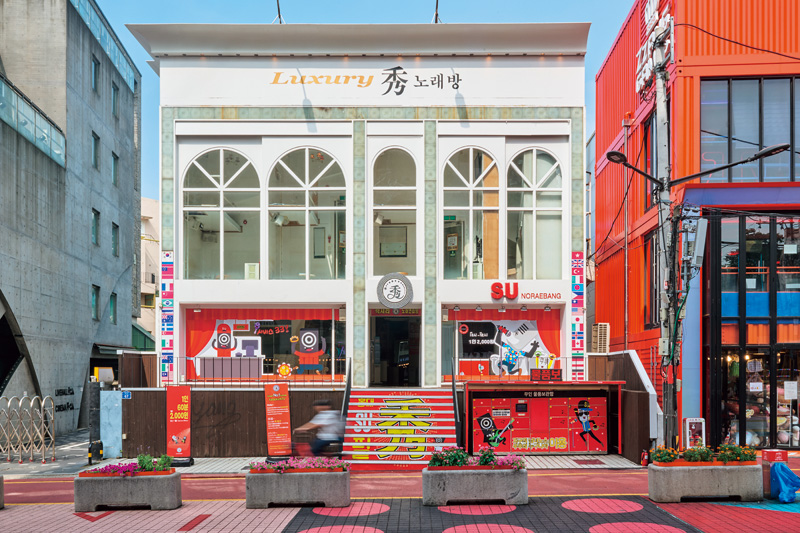
Su Noraebang is a famous fixture of Hongdae. Opened in 1999, it set itself apart from competitors by choosing to go upscale. Its fame escalated when it was featured in the popular MBC TV series My Lovely Sam Soon in 2005.
ARTISTS’ HABITAT
Central to the transformation of Hongdae into a hub of indie culture was Hongik University’s College of Fine Arts. The dynamic interplay between art students and artists laid the groundwork for indie bands and live music clubs to thrive.
Homi Art Shop, founded in 1975, stands as a testament to Hongdae’s artistic heritage. Located close to the university, it has helped to shape the Korean art scene through nearly five decades. Offering an extensive array of art materials, the shop is a fountain of creativity. For artists, it is not just a place to purchase supplies but also a kind of social club where creators connect and share ideas. The prospect of meeting other Hongdae-based artists at Homi Art Shop solidified its reputation as one of the icons of Hongdae. Thanks to its contribution to the art scene, the shop was designated as Seoul Future Heritage in 2020.
VINYL REPOSITORY
When musicians and music lovers reminisce about the Hongdae of old, one name consistently emerges: Blues House. The store, which opened in 1990, stood out not only for its stylish interior but also its meticulously curated music selection. It didn’t take long for Blues House to gain the status of a landmark, and visitors flocked to Hongdae to visit this musical haven. It even served as the backdrop for a novel of the same name by the writer and film critic Ha Jae-bong.
For over two decades, Blues House was a meeting spot for musicians, but in 2016, an inexorable rent hike and challenging business conditions turned off the music. Thankfully, the closure only lasted for four years. Like a phoenix from the ashes, this historic gem re-emerged in 2020 at a new location in nearby Mangwon-dong. The familiar font on its sign, the countless LPs lining the shelves, and the unchanging ambiance welcomed back loyal regulars and a new generation of music enthusiasts.
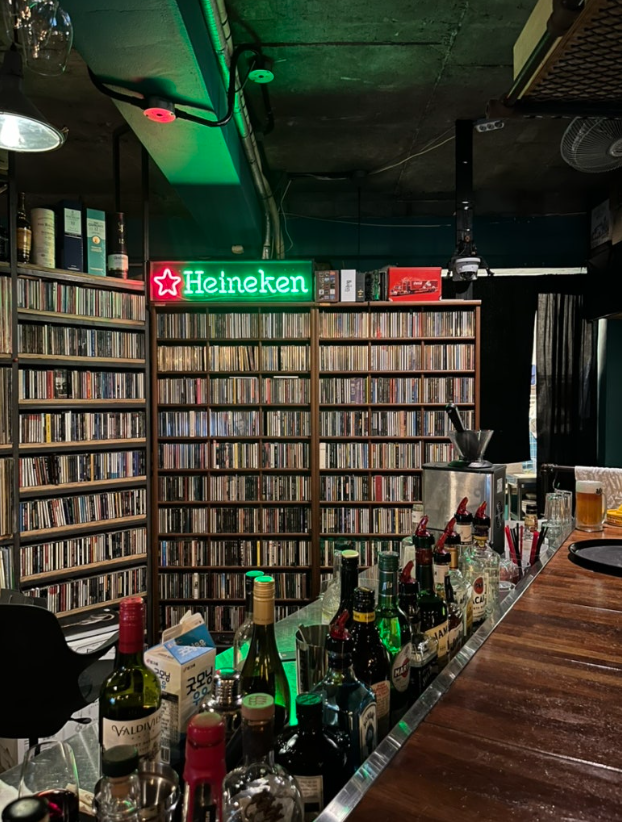
ⓒ NAVER Blog Jinnie
PRESERVING MUSICAL HERITAGE
In recent years, the retro wave has won over young Koreans, touching every facet of life — from food and fashion to electronics, movies, and music. Nostalgic products have found renewed favor, and vinyl records, once considered relics of the past, are no exception.
Gimbab Records, celebrating its 11th anniversary this year, is a popular spot for Hongdae’s youth. Its humble beginnings trace back to a narrow alley in Yeonnam-dong, where it defied the trend of vanishing brick-and-mortar music stores.
The birth of Gimbab Records in 2013 signaled continuation of Hongdae’s music culture, deeply rooted in the indie scene and clubs. Other record stores soon popped up nearby, giving rise to live performances and cultural gatherings. Among these, the Mapo Vinyl Festa, an annual event since 2020, is particularly noteworthy.
Now that the vinyl culture is well established in Hongdae, Gimbab Records has expanded its horizons. Two years ago, it relocated to a more spacious home in Donggyo-dong. It offers thousands of albums that cover an eclectic selection of genres. Beyond record sales, the shop actively promotes the local music tradition, importing gems from abroad and organizing performances for bands under small labels.
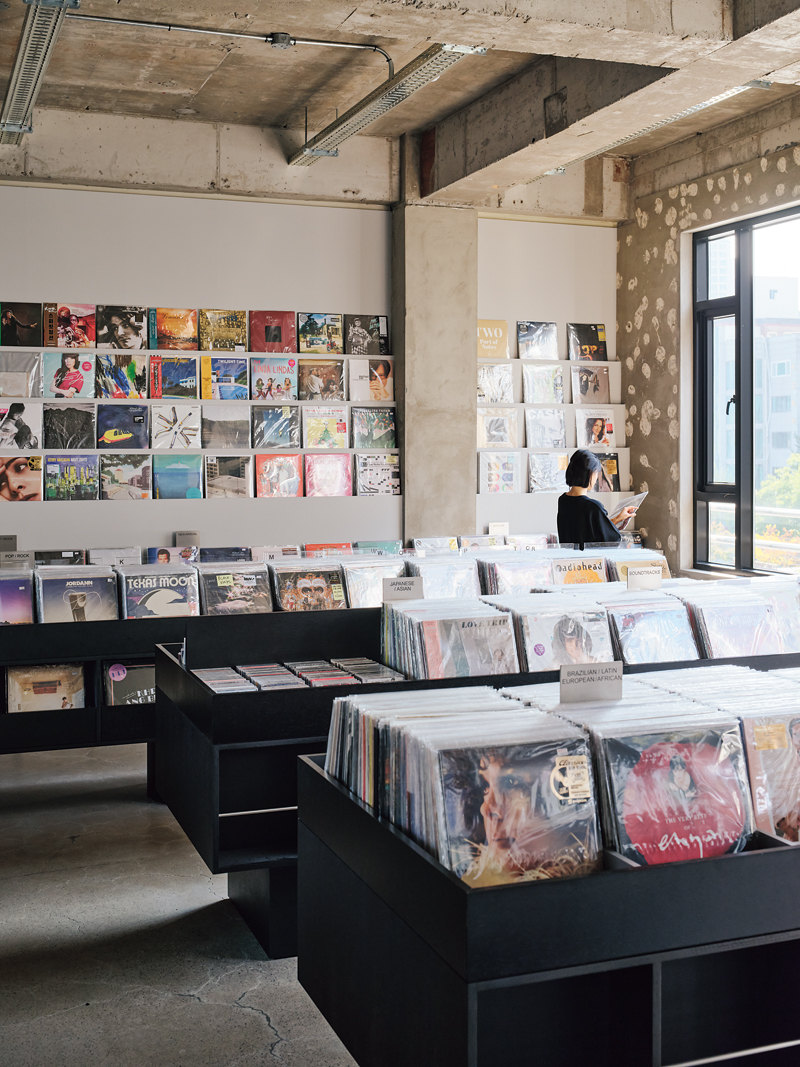
Besides selling albums, Gimbab Records organizes concerts featuring both local and international musicians. Having hosted the Seoul Record Fair for over a decade, it is credited with leading the vinyl renaissance in Korea.
© NONTEXT, photo by kimdonggyu
CRADLE OF SMALL THEATERS
The name of visionary director Lim Young-woong, who passed away in May this year, is engraved in Korean theater history. The founder of the Sanwoollim Theater Company first gained fame for his direction of Samuel Beckett’s Waiting for Godot in 1969. Translated by his wife, Oh Jeung-ja, the groundbreaking premiere is recognized as having raised the standard of Korean theater performances. In 1985, Lim opened Sanwoollim Theater, a cozy place with 100 seats near Hongik University.
During its golden age, the theater staged productions focusing on women’s lives. Noteworthy performances, including Simone de Beauvoir’s The Second Sex and Denise Chalem’s At Fifty, She Discovered the Sea, garnered acclaim for their role in drawing middle-aged women — often overlooked in the artistic and cultural landscape — into the theater.
Today, long past the small theater heyday of the 1980s and 1990s, Sanwoollim remains a committed supporter of the theater community, and its modest confines continue to provide a canvas for young directors to experiment.
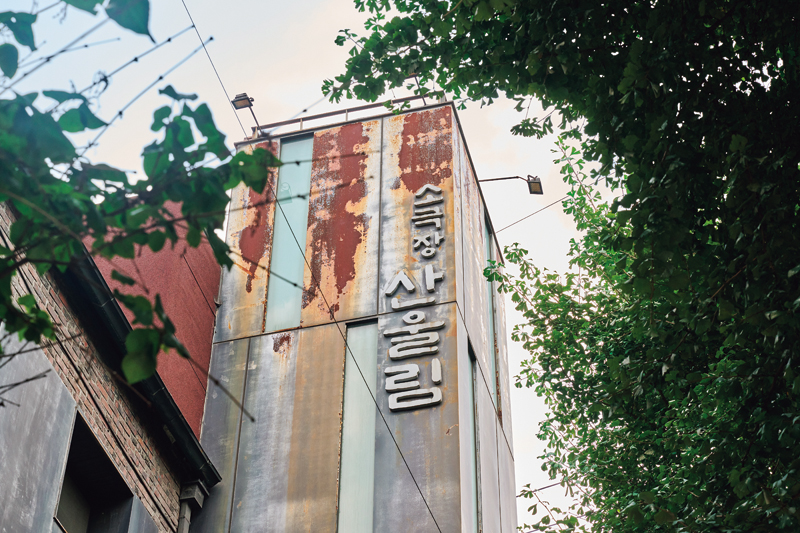
Sanwoollim Theater gained a reputation for its outstanding interpretations of classic plays and the avantgarde works of fledging directors. A Hongdae landmark, it has recently evolved into a cultural complex by adding a gallery and art shop.
BAKED-IN NOSTALGIA
Richemont Bakery opened its doors in Seongsan-dong in 1979. Four years later, the bakery expanded its business to the original core area of Hongdae and quickly became a favorite rendezvous spot. However, the unstoppable spread of franchise bakeries and relentless rent hikes eventually shut down Richemont’s ovens in Hongdae in 2012.
But bakery trends have changed. Over the past four to five years, non-franchise bakeries have surged in popularity, casting a spotlight on Richemont’s original Seongsan-dong store. Now hailed as one of Seoul’s top three bakeries, famous for its delicate cream puffs and bread laced with savory chestnuts, it has reclaimed its former glory, thanks, in part, to nostalgia for the original Hongdae area baked into the aroma of its products.